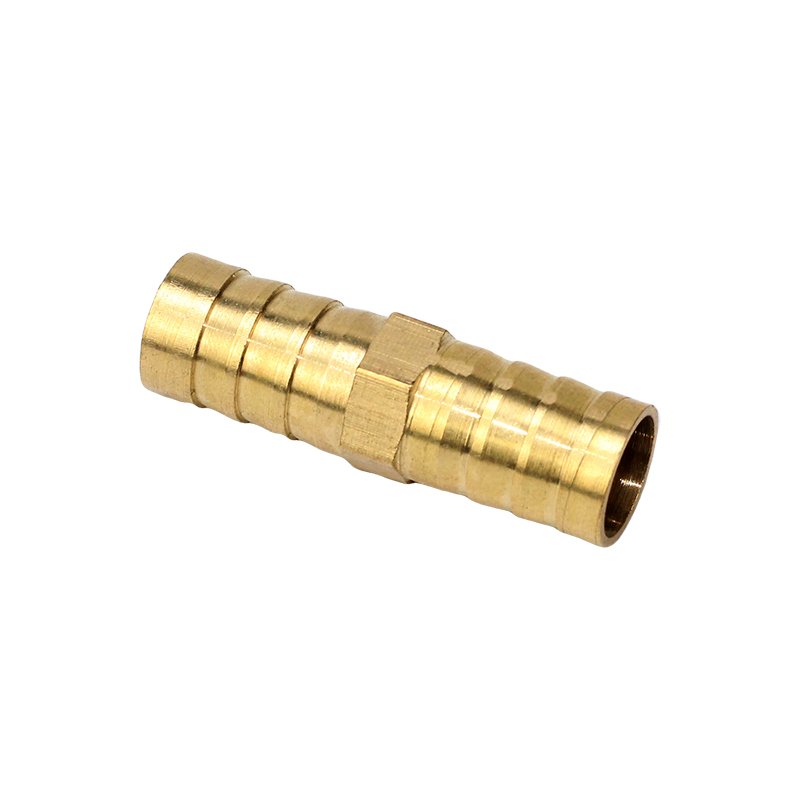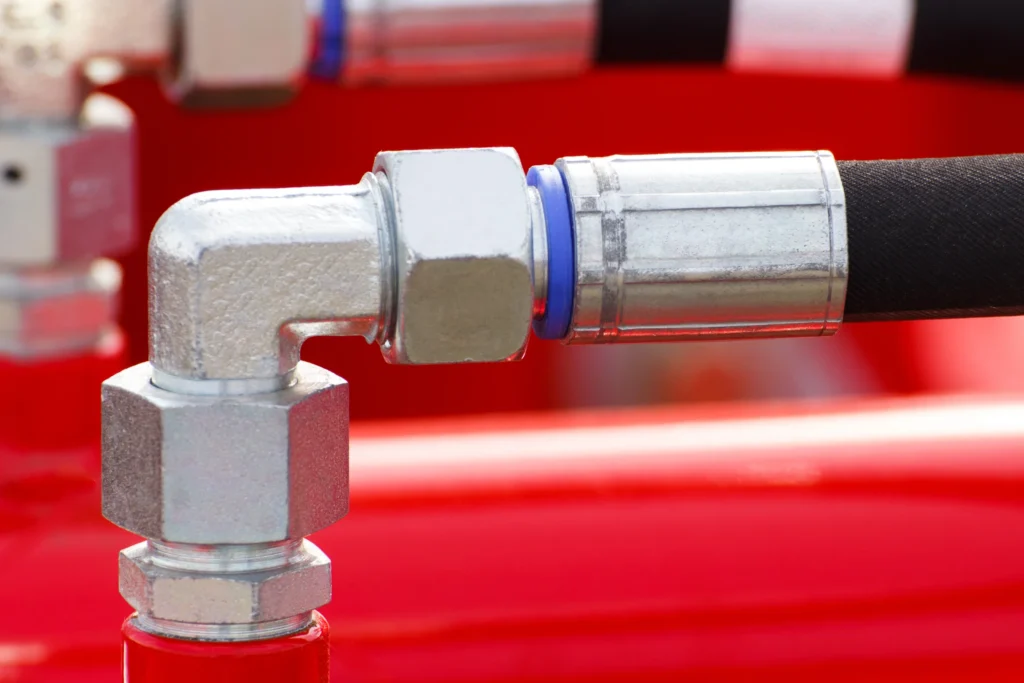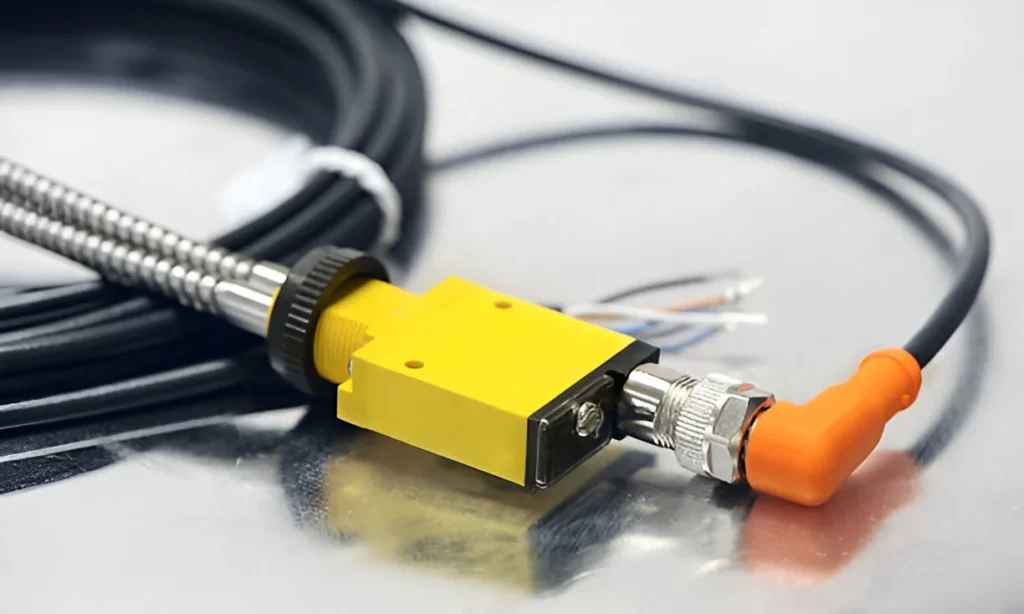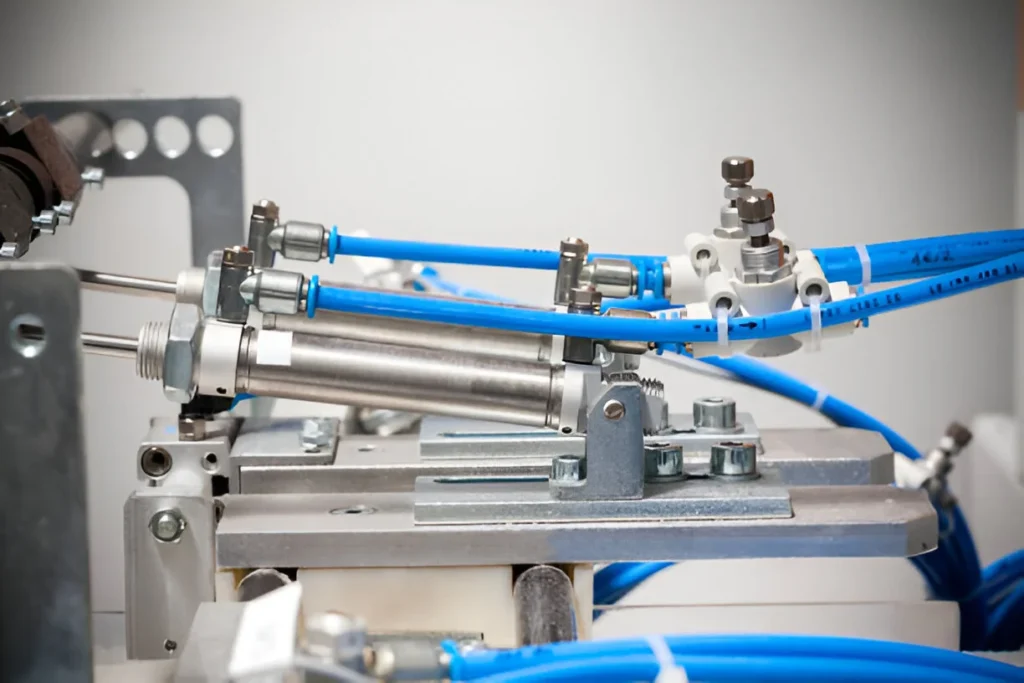The importance of standard cylinders
In the development of the automation industry, standard cylinders play a vital role. As a common actuator, it realizes precise linear or rotational motion by converting the energy of compressed air or liquid into mechanical power, thereby driving the operation of various mechanical equipment and automation systems. The efficiency and reliability of this conversion process make standard cylinders an indispensable part of the automation world.
First, the design and manufacture of standard cylinders follows a series of industry standards, ensuring their wide compatibility and interchangeability. This means that engineers and designers can easily integrate them into a wide range of automation equipment, whether in assembly lines, robotics or precision control systems, standard cylinders can be found.
Secondly, the diversity and adjustability of standard cylinders meet the different needs for speed, power and accuracy in the automation industry. Whether precision operations requiring small torques or heavy load movements requiring large torques, standard cylinders provide the right solution. This flexibility greatly expands the application scope of automation technology. From simple material handling to complex production process control, standard cylinders can play a key role.
In addition, standard cylinders are known for their excellent durability and ease of maintenance. In the harsh environment of the automation industry, these cylinders can continue to operate without frequent maintenance or replacement, ensuring the continuity and stability of the production process. This combination of high efficiency and low maintenance costs makes standard cylinders a key factor in increasing productivity and reducing operating costs.

The power source of standard cylinder and its working principle
This article aims to delve into the source of power of a standard cylinder and how it works, revealing how this key automation component converts energy into mechanical action. Standard cylinders play an indispensable role in the automation industry. Their efficiency and reliability are crucial to maintaining the stability of the production process and improving operating accuracy. Through this article, readers will be able to gain a comprehensive understanding of the power sources of standard cylinders, including the differences between pneumatic and hydraulic cylinders, and how these power sources drive the cylinder for linear or rotational motion.
First, we will introduce the basic concepts and classifications of standard cylinders to provide readers with the necessary background knowledge. Subsequently, this article will discuss in detail the two main sources of power for standard cylinders: compressed air and hydraulic oil. Readers will be able to understand how pneumatic and hydraulic cylinders work by explaining how compressed air or hydraulic oil creates a pressure difference within a cylinder, which creates force to move the cylinder’s piston.
In addition, this article will explore the operating cycle of a standard cylinder, including the extension, stop, and retraction phases, and the various mechanisms that control these actions. By gaining an in-depth understanding of these processes, readers will be able to better understand how standard cylinders operate with high efficiency and precision.
Definition and classification of standard cylinders
The standard cylinder is an actuator widely used in the field of industrial automation. It performs various precise linear or rotational movements by converting the energy of compressed air into mechanical motion. The design and production of this equipment follows specific industry standards, ensuring the reliability, stability and compatibility of its performance with other components in the automation system. Standard cylinders have become an integral part of automation technology due to their outstanding durability, efficient performance and flexibility.
Basic composition
A standard cylinder is mainly composed of a cylinder barrel, a piston (and piston rod), an end cover and sealing components. The piston moves along a straight path inside the cylinder, and a piston rod extends from one end of the cylinder to transfer power to the mechanism. Sealing elements ensure that no leakage occurs during the input and output of compressed air, while end caps seal both ends of the cylinder to maintain internal pressure.
working principle
The working principle of standard cylinders is based on the power conversion of compressed air. When compressed air is input from one end of the cylinder, it generates thrust on the piston, causing the piston to move along the cylinder. This movement can be one-way or two-way, depending on the type of cylinder design.
- Single-acting cylinder: In this type of cylinder, compressed air pushes the piston in one direction only, and the return of the piston is usually accomplished by spring force or gravity. Single-acting cylinders are suitable for simple push and pull tasks.
- Double-acting cylinder: The double-acting cylinder allows compressed air to act on the piston from two directions to achieve reciprocating motion of the piston. This design increases the application flexibility of the cylinder and is suitable for situations where work needs to be performed in both directions.
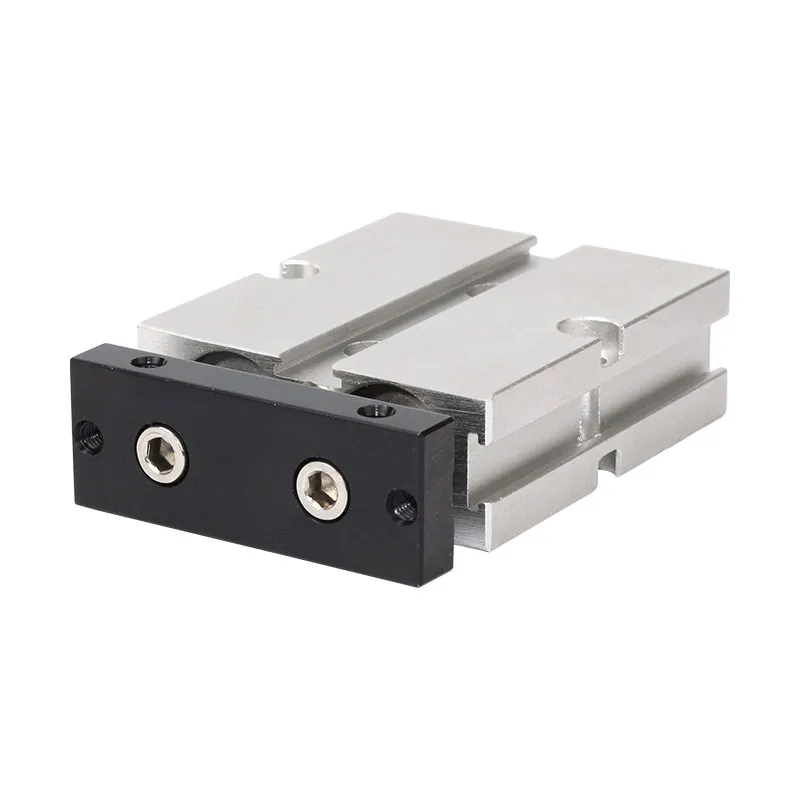
Common types and classification methods of standard cylinders
Standard cylinders are indispensable components in automation engineering. Their diversity and wide range of application scenarios require their detailed classification so that engineers and technicians can choose the appropriate type according to specific needs. The following is a detailed explanation of the common types of standard cylinders and how they are classified:
1. Classification by power source
- Pneumatic Cylinder: This is the most common type of standard cylinder and uses compressed air as the power source. They are widely used in various industrial automation systems, especially where fast, lightweight operation is required.
- Hydraulic Cylinders: Although the primary power source is a liquid (usually oil), hydraulic cylinders are similar in principle to pneumatic cylinders, but they are capable of delivering greater force and are suitable for heavy-duty applications.
2. Classification by structural type
- Single-acting cylinder: In a single-acting cylinder, compressed air can only push the piston in one direction, and the return movement of the piston relies on external force (such as a spring). This type of cylinder has a simple structure and low cost, but power can only be applied in one direction.
- Double-acting cylinder: A double-acting cylinder allows compressed air to force the piston from two directions, enabling bidirectional control. This increases flexibility and power efficiency and is the most commonly used standard cylinder type.
3. Classification by exercise method
- Linear Cylinder: This is the most basic form of cylinder in which the piston moves along a straight path, producing linear motion. Linear cylinders are used for various push and pull actions and are basic components in automation systems.
- Rotary Cylinder: A rotary cylinder converts the force generated by compressed air into rotational motion. This type of cylinder is suitable for applications requiring rotational action, such as adjusting valves or driving rotating platforms.
4. Classification by installation method
- Fixed cylinder: The cylinder block is mounted on a machine or device via a fixed base and the piston rod performs the motion. This cylinder is suitable for most linear motion applications.
- Rail-mounted cylinders: Rail-mounted cylinders move on rails, providing additional freedom of movement. This design is suitable for applications that require the movement of the cylinder itself.
5. Classification by special functions
- Magnetic cylinder: The magnetic cylinder has a magnet installed on the piston, which can be used in conjunction with an external magnetic sensor to accurately control or indicate the position of the piston.
- Compact Cylinders: Designed for applications where space is limited, compact cylinders provide the necessary force and movement despite their smaller size.
Source of power of standard cylinder
The power sources of standard cylinders are mainly divided into two categories: pneumatic cylinders and hydraulic cylinders. Although these two types of cylinders are similar in working principle, that is, they both use fluid pressure to generate motion, they have significant differences in power sources, application scenarios, and performance characteristics.
Pneumatic cylinder
The power source of pneumatic cylinders is compressed air. This working principle makes pneumatic cylinders very popular in various industrial applications, especially where fast movement and high repeatability are required. Compressed air, as a clean and easily accessible energy source, drives cylinders to perform precise linear or rotational movements through specific control systems.
The role of compressed air
Compressed air provides a potential form of energy that stores energy when it is compressed and releases energy when it expands. When compressed air is introduced into one or both chambers of a cylinder, the pressure changes in the air create a force that moves the piston inside the cylinder. The generation and control of this force is achieved by regulating air pressure and flow.
How pneumatic cylinders work
- Single-acting cylinder: A single-acting cylinder has only one air chamber, and compressed air enters through one port to push the piston in one direction. The return movement of the piston is usually accomplished by spring return force or gravity. In this case, the compressed air only provides power in one direction.
- Double-acting cylinder: Unlike a single-acting cylinder, a double-acting cylinder has two air chambers, and compressed air can enter from two ports respectively. By controlling the compressed air to enter the two air chambers alternately, the piston is pushed to move in two directions, achieving bidirectional power. This allows for more precise control of the piston’s position, speed and applied force.
How compressed air drives a cylinder to work
- Piston Movement: When compressed air is introduced into one side of a cylinder, the pressure of the air pushes the piston inside the cylinder to move. This process converts the potential of compressed air into mechanical energy, which can be used to perform various tasks such as pushing, pulling, or lifting objects.
- Control system: Pneumatic systems are usually equipped with components such as valves, pipelines and controllers to control the distribution and flow of compressed air. By precisely controlling the air pressure and flow entering the cylinder, precise control of the speed, direction and force of the piston movement can be achieved.
- Energy conversion and output: Compressed air expands inside the cylinder, converts pressure energy into mechanical energy, and transmits it to the external mechanical structure through the piston rod to complete the required work tasks.
Features
- The response speed is fast and suitable for occasions requiring fast movement.
- Maintenance is simple and cost is low.
- Suitable for clean and dry environments to avoid oil pollution problems.
- Limited force output, suitable for light to medium load applications.
Hydraulic cylinder
The power source of hydraulic cylinders is hydraulic oil. This system uses liquid-usually special hydraulic oil-to transfer energy and generate force. Unlike pneumatic cylinders, which utilize compressed air, hydraulic cylinders use hydraulic oil, which is nearly incompressible and can provide greater power and more precise control. Hydraulic systems work based on Pascal’s law, which states that the pressure of a liquid in a closed container is equal in all directions. This allows hydraulic systems to efficiently convert pressure into mechanical force.
The role of hydraulic oil
Hydraulic oil not only plays a role in transmitting power in the hydraulic system, but is also responsible for lubricating various components in the system, preventing corrosion, helping to cool and clean the system. These versatile properties make selecting the right hydraulic fluid critical to keeping your system operating efficiently.
How hydraulic oil is converted into power
- Pressure generation: The pump in the hydraulic system will suck in the hydraulic oil and send it to the system under pressure, generating high pressure. This high-pressure state is the basis for the hydraulic system to be able to perform its work.
- Control element adjustment: Various valves in the system control the flow direction and flow rate of hydraulic oil, thereby controlling and regulating the actions of the hydraulic cylinder, such as starting, stopping, direction change, and force.
- Force conversion: When hydraulic oil is directed into a hydraulic cylinder, the pressure generated by the high-pressure oil on the piston pushes the piston to move. The piston rod moves accordingly, converting the pressure energy of the liquid into mechanical energy to achieve operations such as pushing, pulling, or lifting heavy objects.
- Reciprocating motion: In a double-acting hydraulic cylinder, hydraulic oil can enter alternately from both ends to push the piston to reciprocate in the cylinder. This bidirectional control increases the flexibility and application range of the hydraulic system.
- Energy transfer efficiency: Because hydraulic oil is almost incompressible, its energy transfer efficiency is very high, which allows hydraulic systems to transfer huge forces, even in extremely small spaces.
Hydraulic system applications
Hydraulic technology is widely used in construction machinery, heavy equipment, aerospace, automobile manufacturing, and various automated manufacturing processes because of its huge force output and precise control. From excavator bucket operations to aircraft landing gear, hydraulic systems are used in a wide range of applications.
Features
- Can provide greater strength and is suitable for heavy load applications.
- Speed and force control are precise for stable motion control.
- Cost and maintenance requirements are high, and hydraulic oil leakage and contamination need to be prevented.
- Suitable for harsh environments, such as high humidity, high dust, high temperature and other conditions.
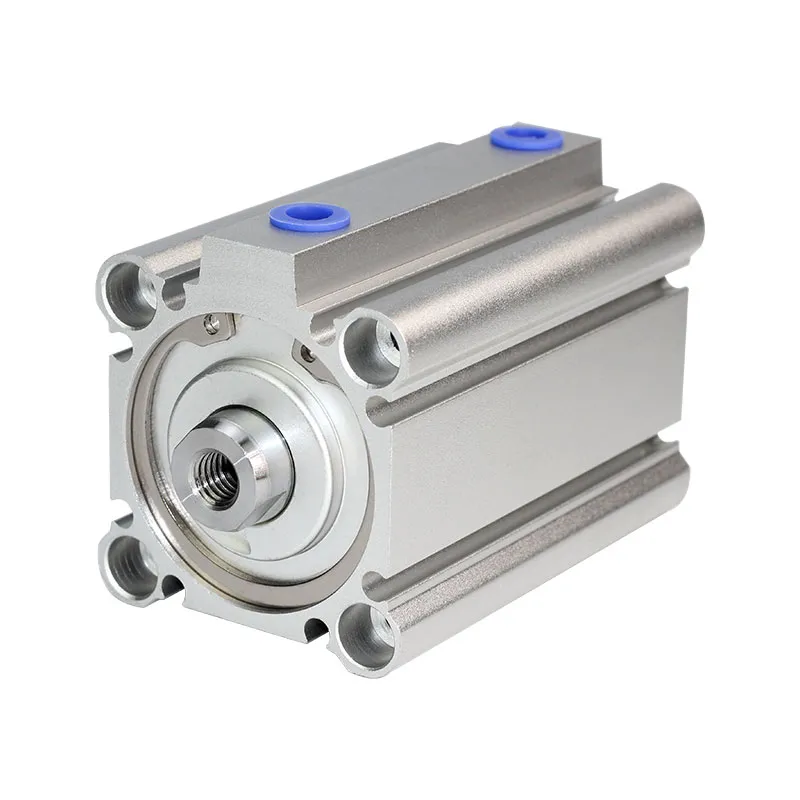
Application of standard cylinder
As an efficient power conversion device, standard cylinders are widely used in various industries and fields. From industrial automation to mechanical engineering to automobile manufacturing, they all play a key role. Here are some specific application examples:
Applications in industrial automation
- Assembly Line: In automated assembly lines, standard cylinders are used to push, position and assemble parts. For example, in electronics manufacturing, cylinders can be used to precisely place tiny electronic components.
- Packaging Machinery: In food, pharmaceutical and consumer goods packaging, air cylinders are used to control the moving parts of packaging machinery, such as pushing conveyors, opening or closing clamping devices, and activating printing and label application devices.
- Robotics: In the field of industrial robots, standard cylinders are used to control the movement of robotic arms, providing precise and repetitive movements for tasks such as welding, spraying, and handling.
Applications in Mechanical Engineering
- Hydraulic Systems: In heavy machinery and equipment, hydraulic cylinders are used to perform tasks with high force demands such as digging, lifting and pushing. These applications are commonly found in construction, mining and agricultural machinery.
- Manufacturing Equipment: In metalworking and plastics forming machinery, standard cylinders are used to control the closing and opening of pressure devices and molds, as well as to activate cutting and forming tools.
Applications in automotive manufacturing
- Production lines: In automotive manufacturing, standard cylinders are used to control various operations on the assembly line, including the automatic installation of parts, the execution of welding operations, and the transfer of finished vehicles.
- Repair and inspection equipment: Automotive service centers use equipment with standard cylinders to lift cars for repairs, as well as cylinder-driven testing equipment used in quality inspections.
Applications in other fields
- Entertainment equipment: In stage machinery and amusement facilities, standard cylinders are used to control the movement of mechanical devices, such as lifting platforms and animation devices.
- Aerospace: In aerospace, cylinders are used to control the position of aircraft flaps and rudder surfaces, as well as perform precise mechanical operations at launch facilities.
Selection and maintenance of standard cylinders
Selecting the appropriate standard cylinder and performing appropriate maintenance are the keys to ensuring its long-term stable operation and maintaining efficient production. Here are some basic guidelines for selecting and maintaining standard cylinders:
Standard cylinder selection
- Determine cylinder type: Based on the application needs, decide whether you need a pneumatic or hydraulic cylinder. Pneumatic cylinders are suitable for light loads and high-speed applications, while hydraulic cylinders are more suitable for heavy loads and applications requiring precise control.
- Calculate the required force: Calculate the required force based on the load requirements of the application to ensure that the output force of the cylinder is sufficient to perform the intended task.
- Consider stroke length and speed: When selecting a cylinder, consider the required stroke length and speed of movement of the piston rod, which will affect the choice of cylinder size and model.
- Installation space: Consider the space limitations of the cylinder installation, and select a cylinder of appropriate size and installation type to suit the equipment design.
- Environmental conditions: Consider the impact of the working environment (such as temperature, humidity, presence of corrosive gases or liquids, etc.) on cylinder materials and sealing systems.
- Compatibility: Ensure that the cylinder’s interface, pressure rating and other technical parameters are compatible with other components of the system.
Maintenance of standard cylinder
- Periodic Inspections: Periodically inspect the condition of cylinders, piston rods, and seals for signs of wear, damage, or leaks.
- Cleaning and Lubrication: Keep the cylinder and surrounding area clean, and regularly lubricate the piston rod and seals to reduce wear and extend the life of the cylinder.
- Monitor pressure and temperature: Regularly monitor the system’s operating pressure and temperature to ensure they are within normal limits and to avoid overload or overheating conditions.
- Replace damaged parts: Once the seal, piston rod or other key parts are found to be damaged, they should be replaced immediately to prevent cylinder performance degradation or failure.
- Follow the manufacturer’s maintenance guidelines: Each cylinder manufacturer may provide specific maintenance and care recommendations that can be followed to ensure optimal performance of the cylinder.
FAQ
Q: How do I choose a standard cylinder for my application?
A: When selecting a standard cylinder, consider the following factors: required power, stroke length, working speed, working environment (temperature, humidity, possible corrosive substances, etc.), installation space, and budget. Pneumatic cylinders are suitable for light to medium loads, while hydraulic cylinders are suitable for heavy-duty applications.
Q: What is the difference between pneumatic cylinder and hydraulic cylinder?
A: Pneumatic cylinders use compressed air as a power source and are suitable for applications with high speeds and light to medium loads. Hydraulic cylinders use hydraulic oil as a power source, providing greater power and suitable for heavy-duty applications.
Q: How to maintain standard cylinder?
A: Regularly check the seals and piston rods for damage or wear, keep the cylinder and surrounding environment clean, regularly check and replace lubricating oil, ensure the quality of the air and oil sources, and avoid contaminants entering the system.
Q: Why is my cylinder piston rod stuck?
A: A stuck piston rod may be caused by worn seals, clogged contaminants, insufficient lubrication, or internal damage to the cylinder. Check and clean the cylinder and replace damaged parts if necessary.
Q: Why is my cylinder leaking?
A: Leakage may be caused by aging or damaged seals, loose or damaged connecting parts. Check and tighten all connecting parts and replace damaged seals.
Q: What should I do if the cylinder thrust is insufficient?
A: Insufficient thrust may be caused by insufficient compressed air or hydraulic oil pressure, leakage, or contaminant blockage inside the cylinder or pipes. Check system pressure, clean out contaminants, and ensure there are no leaks.
Q: Can standard cylinders work in high temperature environments?
A: Yes, but you need to choose a cylinder suitable for high temperature applications. This type of cylinder usually uses high temperature resistant seals and lubricants. Make sure the material and design of the cylinder are suitable for your work environment.
Q: How to improve the working efficiency of the cylinder?
A: Methods to improve work efficiency include selecting the appropriate cylinder size to reduce unnecessary energy consumption, ensuring the quality of the air and oil sources, and adopting appropriate speed and force control strategies.

The Importance of Power Source in Optimizing Cylinder Performance
Understanding and selecting the correct power source is critical to optimizing cylinder performance. This is not only related to the effective operation of the cylinder, but also directly affects the efficiency, reliability and ongoing operating costs of the entire system. As two main power sources, pneumatic cylinders and hydraulic cylinders each have unique advantages and applicable scenarios. Proper selection of the power source ensures optimal cylinder performance in a specific application while avoiding unnecessary maintenance issues and excessive energy consumption.
Power source optimization of pneumatic cylinders
Pneumatic cylinders use compressed air as a power source and are suitable for applications requiring fast movement and lower force output. In order to optimize the performance of a pneumatic cylinder, it is important to ensure that the quality and supply pressure of the compressed air meet the requirements of the cylinder. The humidity, temperature and purity of the air will affect the operating efficiency and life of the cylinder. For example, overly humid air can cause corrosion of internal components, while impurities in the air can clog the cylinder’s tiny passages.
Optimization of power sources for hydraulic cylinders
Hydraulic cylinders transmit power through hydraulic oil and are suitable for applications that require greater power and precise control. The efficiency of a hydraulic system depends heavily on the quality of the hydraulic oil, the pressure stability of the system, and the performance of the pumps and valves. Choosing the right viscosity and type of hydraulic oil can reduce energy losses and extend the life of system components. At the same time, maintaining system cleanliness and avoiding oil contamination are keys to ensuring hydraulic cylinder performance.
The importance of power source selection
Correct selection and management of power sources can not only improve the operating performance and response speed of the cylinder, but also reduce energy consumption and maintenance costs during operation. When designing an automation system or mechanical equipment, considering the match between the characteristics of the power source and the application requirements is a step that cannot be ignored. For example, pneumatic cylinders are used when speed requirements are high but power requirements are low, and hydraulic cylinders are used when power and control accuracy are high.
In short, understanding the characteristics of different power sources and selecting the most appropriate power source based on application requirements is the key to optimizing cylinder performance, improving production efficiency and reducing maintenance costs. This involves not only technical choices, but also considerations of economic benefits and system stability. Correct power source selection can provide a solid foundation for the long-term stable operation of the cylinder and the entire system.

